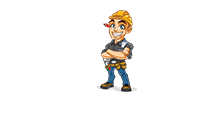You might feel that you are fully able to do your own home improvement, but there are some terms that can cause you to be completely confused!
Dry rot – found in areas where ventilation is bad, dry rot doesn’t need moisture to flourish. The spores attack wood and sometimes brick and you need to seek professional help to get rid of it.
Rising damp – water soaking up from the floor. This is often caused if the land outside is higher than the floor inside, so it is more common in basements. You need to thoroughly fix this problem or it will keep coming back.
Primer – the forst coat before you apply the paint. If you need a metal primer it will protect against corrosion and rusting, and a wood one will prevent the absorption of further layers of paint to the wood.
Stud partition walls – an inside wall that is thin wood structured with studs of metal, and often covered with plasterboard. They are not supporting walls and are therefore easy to remove if needs be.
Engineered wood flooring – not fixed to the floor beneath, this type of flooring is made by each plank of wood forming a layer, and as the grains cross it creates stability. The top layer is a hardwood so the flooring type is relatively cheap, it just looks like it is expensive!
Epoxy putty – sticks to most materials and is used to repair leaks in pipes. It starts to harden upon contact and takes seventy two hours to be completely dry. It’s a short term solution (the best idea is to just replace the pipe) but it will work for the interim.
UPVC doors 0 UPVC is a type of reinforced plastic that is wipe clean and requires little work to maintain. They come in plain white or you can get wood effect to blend in with your other features in the home.
If you are doing any home improvement then ensure you have checked with your Home Insurance provider to make sure you are covered for these changes or any issues if there was to be an accident.
